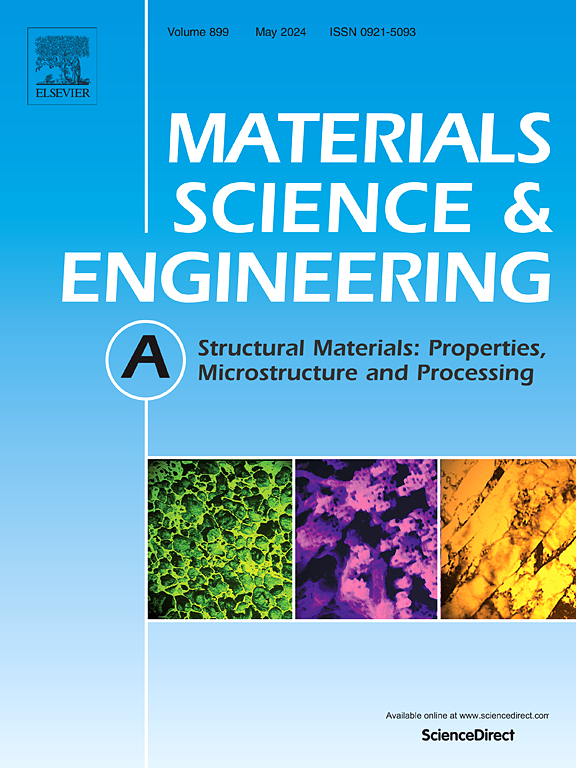冷轧退火激光粉末床熔合316L不锈钢强度和塑性协同增强机理
IF 6.1
2区 材料科学
Q1 MATERIALS SCIENCE, MULTIDISCIPLINARY
引用次数: 0
摘要
通过纳米压痕、轧制退火和拉伸试验,研究了跨尺度界面对激光粉末床熔合316L不锈钢强化机理的影响。具有高密度位错和元素偏析的胞状亚晶抑制位错形核和移动,在变形过程中起晶界作用。无论轧制还是退火,胞状亚晶均表现出较高的稳定性。轧制退火导致增材制造不锈钢的晶粒尺寸呈双峰型分布。该策略保留了胞界的晶界强化效果,同时引入高密度位错以提高屈服强度。同时,局部再结晶晶粒调节应变分布,使变形更加均匀,促进广泛变形孪晶的形成,从而提高塑性。这些发现表明,在保持细胞结构增强的同时优化晶粒尺寸为提高材料的综合力学性能提供了一条可行的途径。本文章由计算机程序翻译,如有差异,请以英文原文为准。
Mechanisms of synergistically enhanced strength and plasticity in 316L stainless steel fabricated by laser powder bed fusion via cold rolling and annealing treatments
The effect of the cross-scale interfaces on the strengthening mechanism of laser powder bed fusion processed (L-PBFed) 316L stainless steel was investigated by nanoindentation, rolling-annealed and tensile test. The cellular sub-grain with high density dislocations and element segregation supressed dislocation nucleation and move, acting as grain boundary during deformation. The cellular sub-grain showed high stability despite of rolling and annealed. Rolling-annealing induced a bimodal grain size distribution in additively manufactured stainless steel. This strategy retained the grain boundary strengthening effect from cellular boundaries while introducing high-density dislocations to elevate yield strength. Concurrently, localized recrystallized grains modulated strain distribution, enabling more uniform deformation and promoting widespread deformation twin formation, thereby enhancing plasticity. These findings demonstrate that optimizing grain size while preserving cellular structure strengthening offers a viable pathway to improve the comprehensive mechanical properties of materials.
求助全文
通过发布文献求助,成功后即可免费获取论文全文。
去求助
来源期刊

Materials Science and Engineering: A
工程技术-材料科学:综合
CiteScore
11.50
自引率
15.60%
发文量
1811
审稿时长
31 days
期刊介绍:
Materials Science and Engineering A provides an international medium for the publication of theoretical and experimental studies related to the load-bearing capacity of materials as influenced by their basic properties, processing history, microstructure and operating environment. Appropriate submissions to Materials Science and Engineering A should include scientific and/or engineering factors which affect the microstructure - strength relationships of materials and report the changes to mechanical behavior.
 求助内容:
求助内容: 应助结果提醒方式:
应助结果提醒方式:


